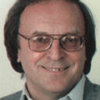Wilhelm Jan Ansorge (born July 14th 1944) is a German-Czech scientist, born in Czechoslovakia. He developed novel Scientific Instrumentation and Software, enabling major advances in analyzing genomes, genes and proteins in cellular and molecular biology, as well as in medical fields.
His laboratory pioneered multidisciplinary developments of automated technology and techniques in : Sequencing and Analysis of genomes, first complete Human Genome Chip Array (and the International standard protocol for microarrays MIAME), devices for synthesis and analysis of DNA and proteins, Automated Systems for Microinjection and Image Analysis in Single Cells, Fast Screening of Monoclonal Antibodies, Electro-transfection of cells. He investigated magnetic properties of materials, worked in design of semiconductor devices, and of superconducting magnets.
After dissertation and 2 years as Assistant Professor at the Faculty of Mathematics and Physics, Charles University Prague, he joined for 4 years Texas Instruments, Dallas, USA (Development of semiconductor technology). Then he worked 6 years at CERN, (www.cern.ch), the Particle Physics Research Centre in Geneva, in development of superconducting magnets for accelerators. Thereafter he joined for 25 years the EMBL, European Molecular Biology Laboratory in Heidelberg (www.embl.de), as the Head of Genomics Technology Department. At EMBL he developed the fluorescence DNA sequencer (1986), the first functional automated system capable to sequence reliably large genomic DNA. The feasibility of sequencing the Human Genome with this automated technology was demonstrated by his team on human HPRT (60kb) gene locus (Genomics, 1990). In the work was for the first time applied the paired-end sequencing approach, developed in the team for the project. This method is now a standard in genome sequencing.
In 1991 he presented a High throughput planar fluorescence technique for DNA Sequencing by Synthesis without gels, similar to those used in high throughput Next Generation DNA Sequencing systems. Technology developments were made commercially available and applied in biological and medical fields. In 1996, Ansorge was one of the three founders of Lion Biosciences, a Biotech company listed in 2000 on Nasdaq.
Currently, he is a visiting scientist at EPFL-ETH Lausanne, serving on several European Scientific Advisory Boards, evaluating scientific projects and institutions, with continued interest in innovative analysis techniques for genomics and medicine.
Wilhelm Ansorge co- authored over 250 publications, some included in Teaching material by universities worldwide (e.g. Next Generation DNA Sequencing review (I) in 2009, its updated version (II) in 2016), and 5 books on Molecular Diagnostics, Genomics, Microarrays techniques, DNA Sequencing and Analysis.
He applied for and was granted over 30 patents in genomics and technology, with license agreements and commercial products by leading European companies.
He presented research results of his group in about 100 international conferences.
More information HERE (CV in English)

